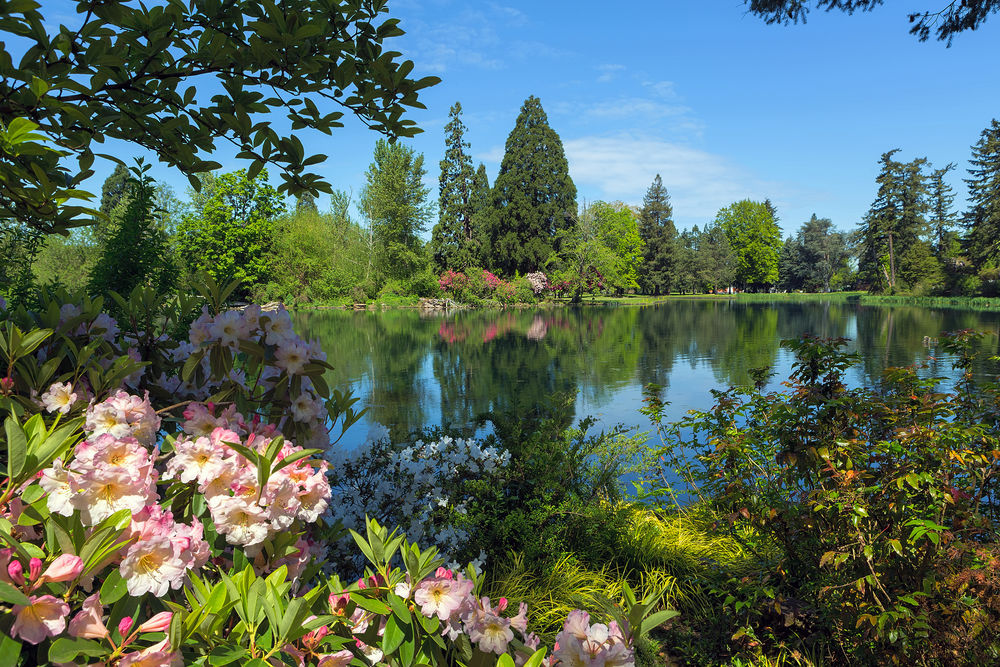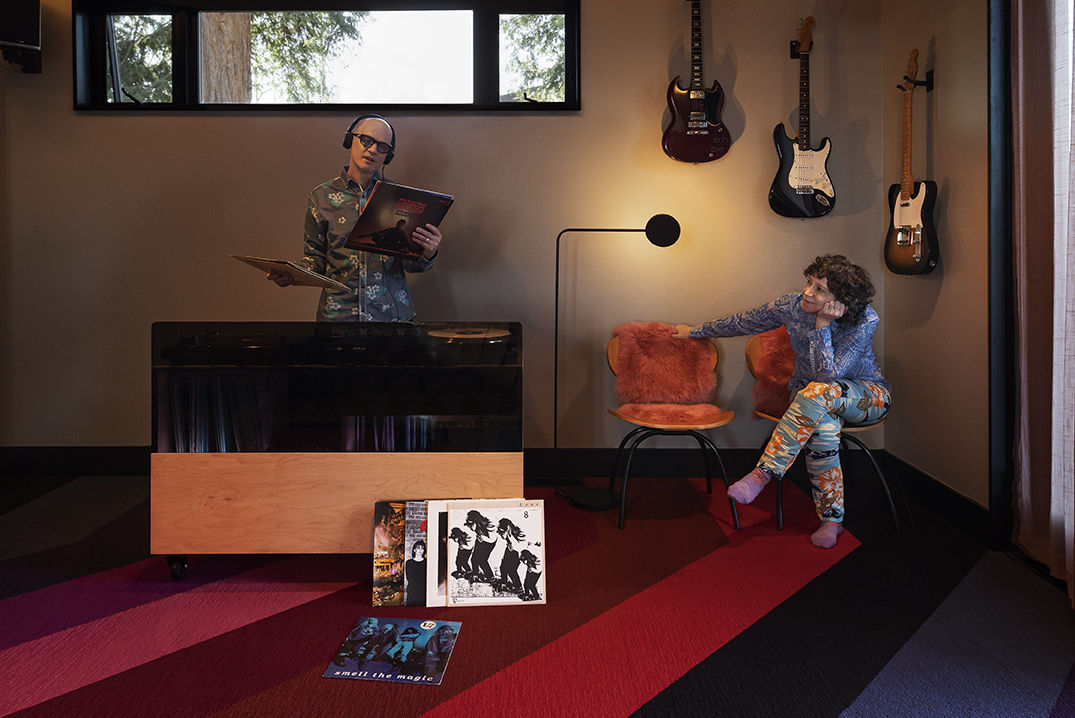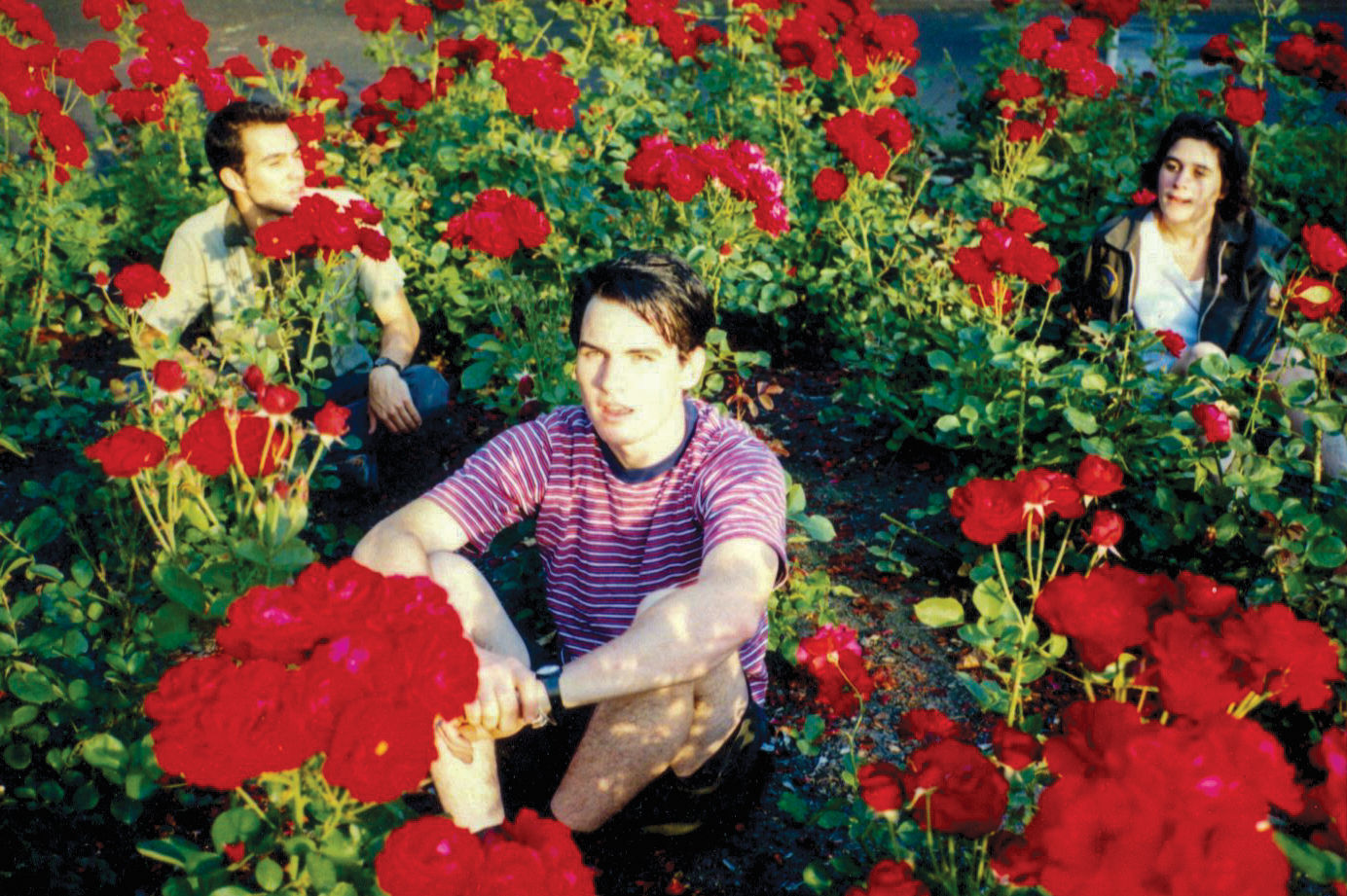
That One Time Portland Was in ‘Sassy’ in 1991
Photograph in Ladd's Addition rose garden, 1991, by JJ Gonson
Portlanders who didn’t grow up here, how did the city first get on your radar? When Mount St. Helens blew? Headlines about owls or Little Beirut? Portlandia episodes or Gus Van Sant movies? When Everclear or Elliott Smith or Aminé broke big?
If you were a teenage girl in 1991 with a subscription to the stealthily revolutionary young-feminist magazine Sassy, it might have been a travel story on p. 30 of that year’s October issue, in which three Reed students who had lived here barely three years and their photographer friend from Boston showed off the City of Roses.
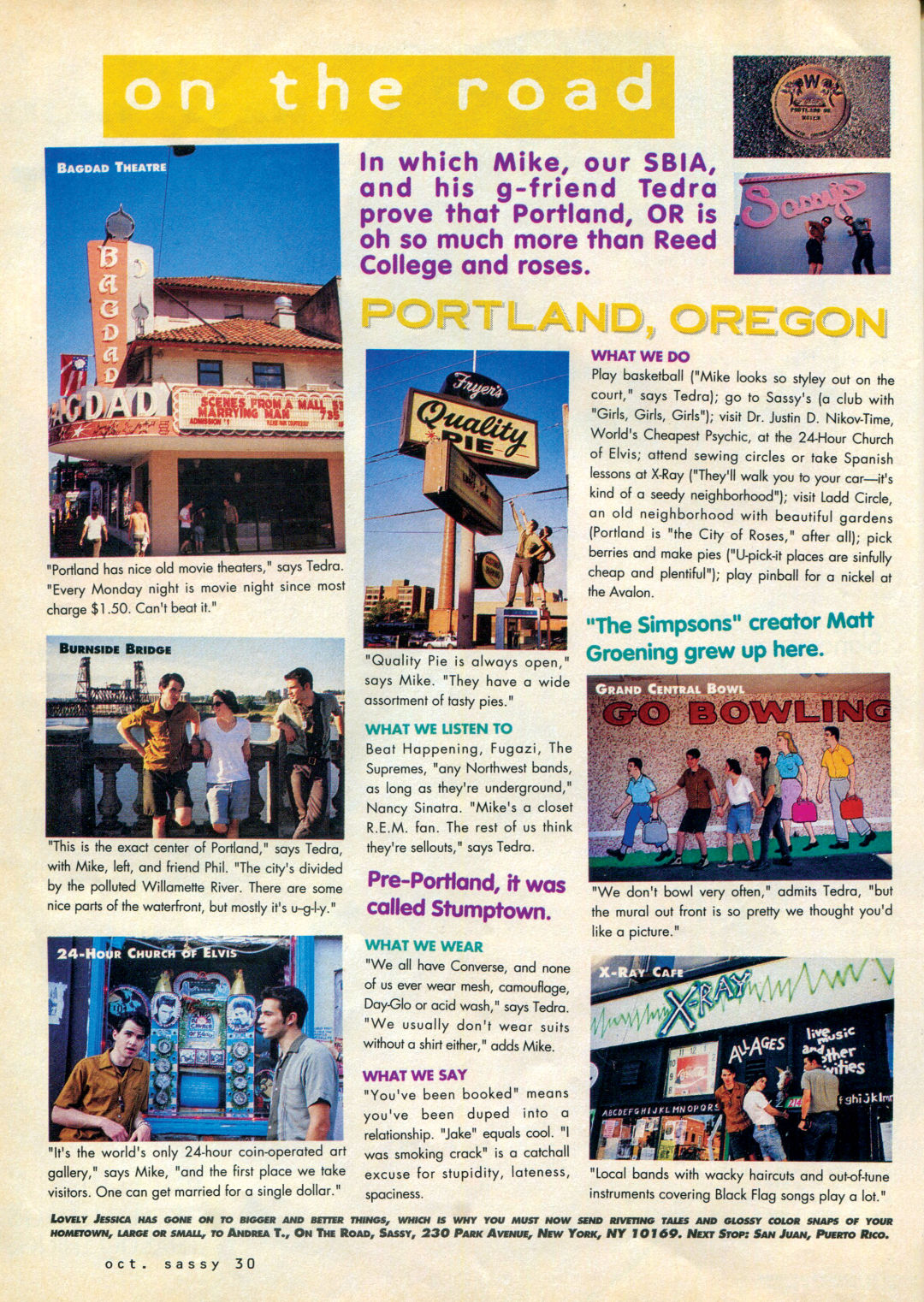
“I still get people who tell me how much this article and Sassy magazine impacted them as a teen,” says Tedra Demitriou, who moved here from Atlanta in 1988 to attend Reed College. In the summer of 1991, Demitriou and then-boyfriend Mike Clark, rising seniors at Reed, had visited the Sassy editorial office in New York after Clark had won the teen magazine’s second annual “Sassiest Boy in America” contest on the grounds of his musicianship, college radio DJ experience, thrift-store fashion style, indie-rock overlap with 1990 SBIA winner Ian Svenonius, and resemblance to Christian Slater. (Star of Heathers and Pump Up the Volume, Slater was one of the few men ever to grace a Sassy cover, along with Jason Priestley, Alex Winter and Keanu Reeves from Bill and Ted’s Excellent Adventure, and Kurt Cobain.)
Back in Portland, Clark got “a panicked call,” he remembers, “that the person who was going to do the ‘On the Road’ had flaked out at the last minute, or maybe they’d submitted something that was just pictures of them at the mall.” The Sassy editors needed a new travel story for the next issue, stat.
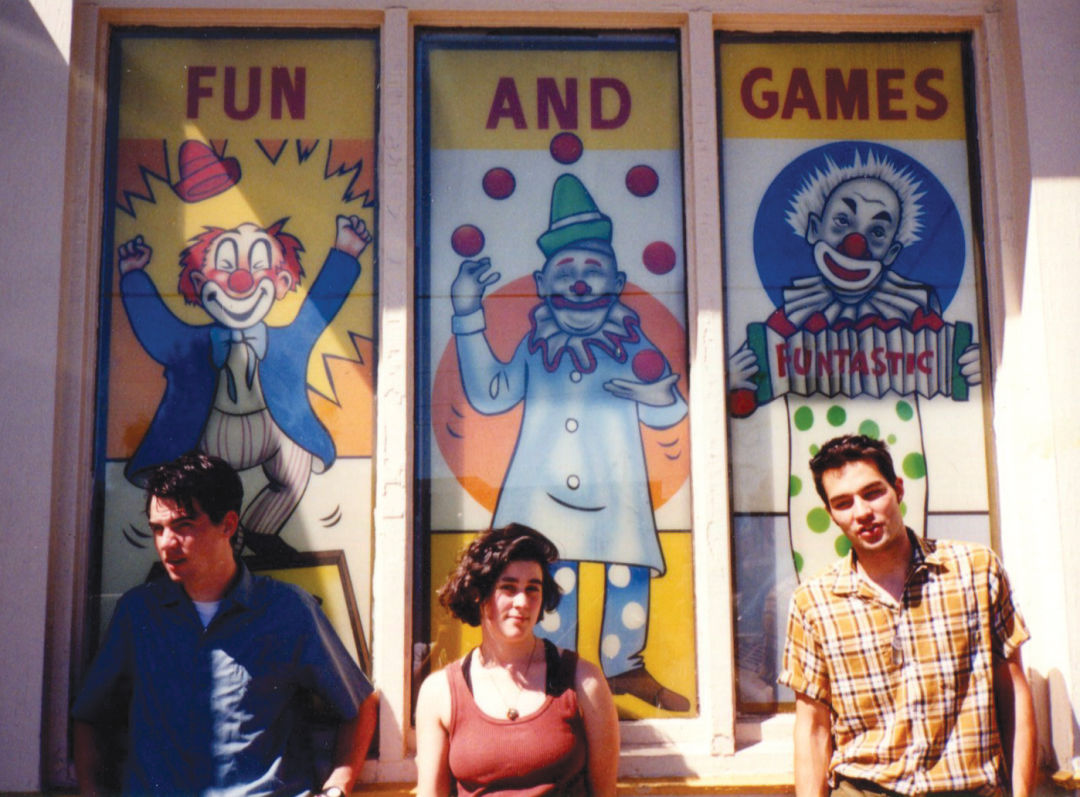
Mike Clark, Tedra Demitriou, and Phil Quitslund at the Wunderland on SE Belmont Street in 1991
Image: COURTESY JJ GONSON
“I remember the instructions being, like, take pictures of Mike in iconic places,” says JJ Gonson, the photographer they roped in, along with fellow Reedie Phil Quitslund. Those iconic places included the 24-Hour Church of Elvis, for which Demitriou made tiny zines for its coin-op dispenser. “You’d put in a couple quarters, and a lot of things would happen when you put the quarters in. The computers would talk to you, and you’d press buttons, and things would move around,” she says of the local oddity, which in 1991 was around the corner from Berbati’s Pan and what’s now downtown’s Voodoo Doughnut. “It was really truly a feat of technology and a work of art. It would spit out these weird little prizes [including Dumpster-dive-sourced photos with Elvis stickers on them]. It was fantastically cool.”
They also visited Quality Pie, the 24-hour Nob Hill landmark that would close the following year; and the X-Ray Café, an all-ages punk club that Gonson, who now runs a music venue in Boston, remembers affectionately as “really low-qual” and “really loud.” Clark’s Toyota Tercel also took them by the Bagdad; Grand Central Bowl; the strip club Sassy’s, of course; and a few spots that didn’t end up on the page, like Hung Far Low and Corno’s Food Market. (They also posed next to a stack of TVs in front of a group house called the Ricker—“named after Ricky Schroder, which was a little funnier in 1991 than it is in 2021,” says Clark.)
Southeast was overrepresented among Portland's quadrants in their stops that day. "Reed was pretty insular," Clarks remembers. "I mostly hung out on campus, except I went to record stores and I went to shows. I learned Satyricon didn't have all that stringent an ID policy, so I could borrow one from my roommate, who was also a white male."
Demitriou admits not everything in the travel story was true. They’d never actually been inside Sassy’s, and they made up fake Portland slang like “Jake,” which allegedly meant “cool.” Clark remembers the slang prank as an “homage to Megan Jasper at Sub Pop, when she made up the fake grunge lexicon” that ran in the New York Times. But the Seattle record label staffer (now Sub Pop’s CEO) didn’t punk the Times until the following year, so maybe her grunge lexicon was an homage to them.
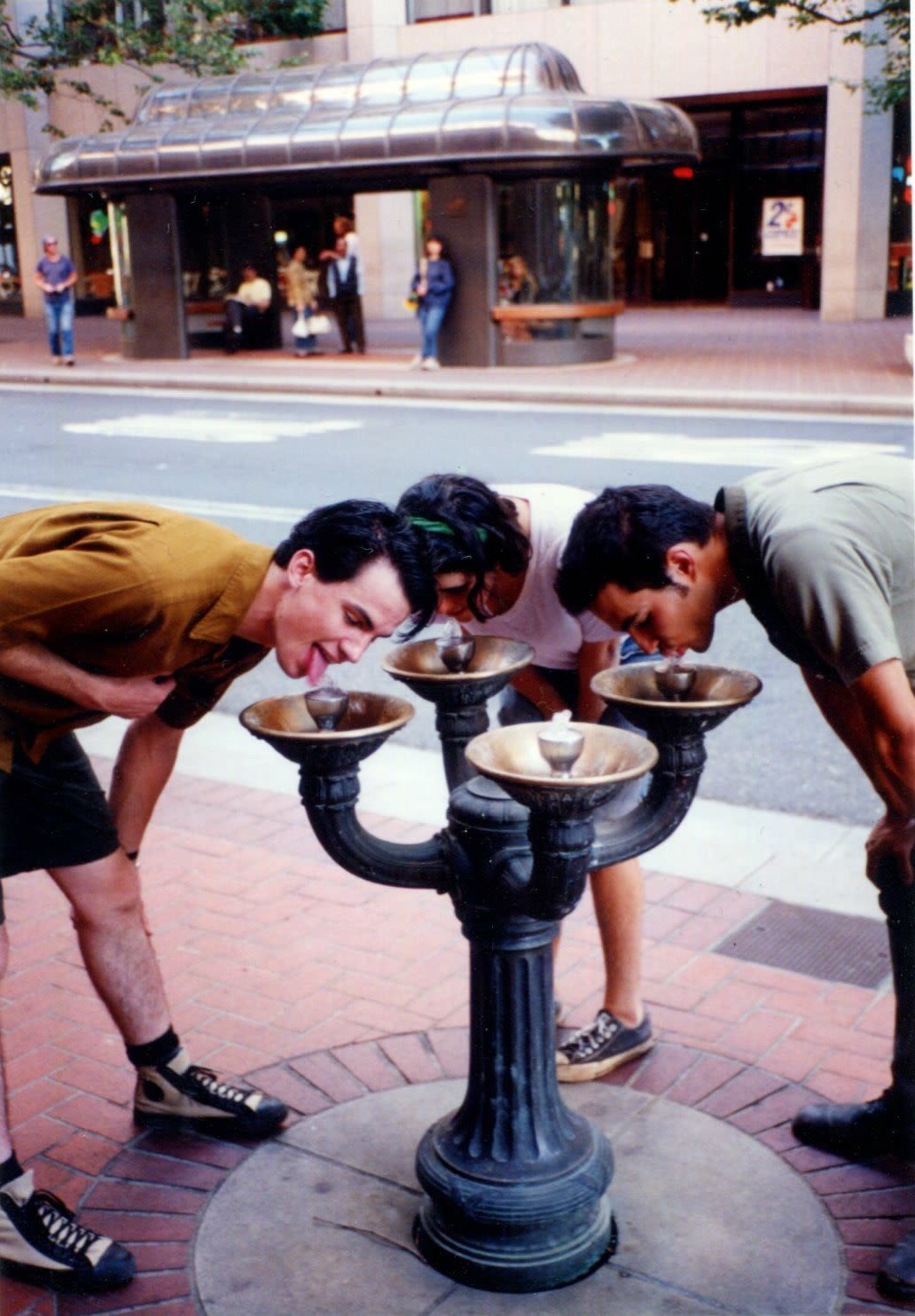
Clark, Demitriou, and Quitslund sample a Benson Bubbler on downtown's bus mall in 1991.
Image: COURTESY JJ GONSON
Of the Portland landmarks that appeared 30 years ago in the magazine (which had a spookily lit Milla Jovovich on the cover—she was also the model for a Buf-Puf ad on p. 29), some are still around, some have perished along with the dream of the ’90s, but all live on in the memory of readers whose curiosity about this old timber town was suddenly piqued. And some are still visited by Portland’s Sassy ambassadors. With the exception of Gonson, they all live in town—albeit in their own homes and not punk group houses for which Clark's wife, Robin, who also went to Reed, remembers paying $167 a month as her share of the rent in the ’90s. Demitriou, now a nurse, runs Legacy's drive-thru COVID testing clinic. Clark is a touring musician with Stephen Malkmus and the Jicks as well as a McMenamins accountant, and Quitslund is a software engineer.
“If we had to do this now,” Demitriou mused on a group Zoom call this summer, “it’s like the park, the grocery store—I don’t do anything fun anymore! Maybe the aerial tram?”
“Maybe go out to the Bluffs, because that’s the only walk we ever do,” Clark says of the North Portland viewpoint, a place he didn’t know about yet when he was in college but which is near his house now. In what's not just a nod to his employer, he might also add Edgefield and the Kennedy School to the shot list today.
Demitriou also suggests the Holman Dock by OMSI, which Gonson was surprised to learn had become a popular spot.
“You can swim in the Willamette?” asks the shocked photographer, who remembers ’90s-era health warnings about the water. Gonson took a photo of the other three on the Burnside Bridge in 1991, and its Sassy caption mentions pollution and the “u-g-l-y” waterfront.
“Usually I go down there in the evening, and they’re packed full of 20-somethings smoking weed and listening to music and showing off their tattoos,” says Demitriou of her summer nights. “And I go down there with my ‘middle-aged teenager’ friends, all dumpy in our old-lady bathing suits, and it’s super, super fun.”
“Wow, that sounds awesome,” marvels Gonson. “Very sassy.”

1990 Sassiest Boy in America Ian Svenonius (of the band Nation of Ulysses), Clark and Demitriou’s friend Katrina Miller, and 1991 Sassiest Boy in America Mike Clark at the International Pop Underground Convention in Olympia, Washington, August 1991, the same summer the Sassy photos of Portland were taken
Image: Courtesy Robin Clark


